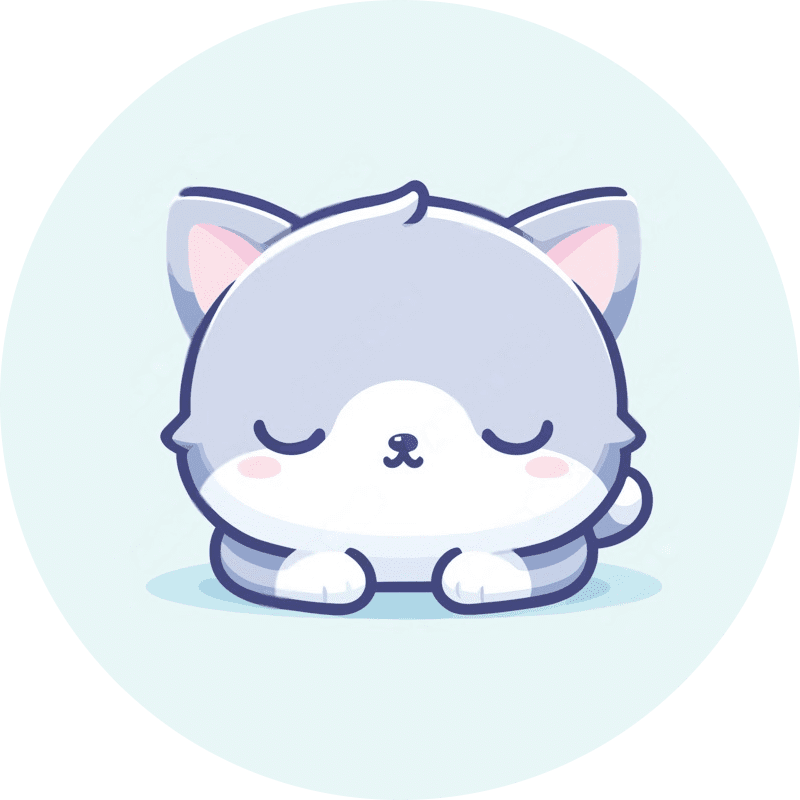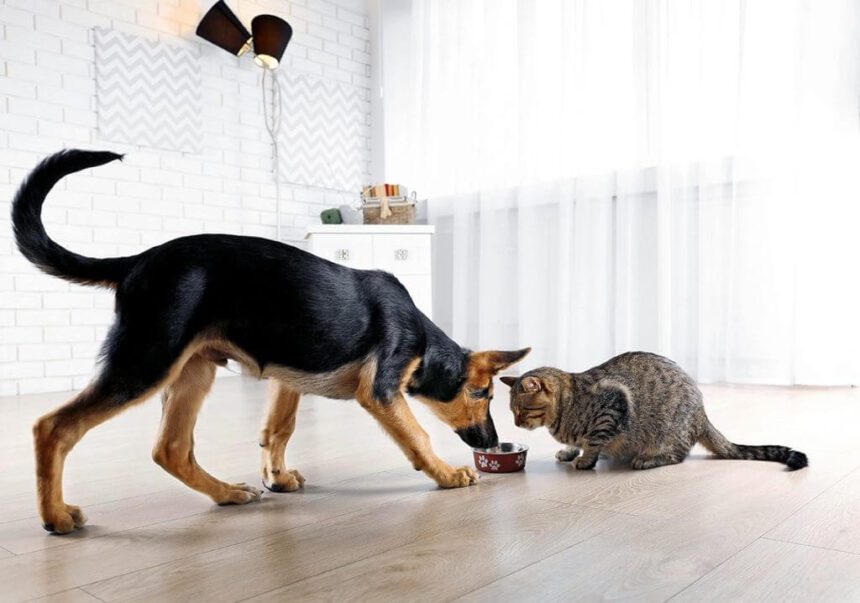Can a Dog Die From Eating Cat Food? As pet owners, we always strive to provide our furry companions with the best care and nutrition.
However, what happens when our four-legged friends get a little too curious about what’s on the menu for their feline counterparts?
The question of whether a dog can die from eating cat food might seem surprising, but it’s a valid concern that many pet owners may not be aware of.
In this article, I’ll delve into the potential risks associated with dogs indulging in a feline feast and explore why it’s crucial to be mindful of what our pets consume.
Let’s uncover the hidden dangers lurking in that seemingly innocent bowl of cat food and understand how it could impact the health and well-being of man’s best friend.
Why Do Dogs Eat Cat Food?
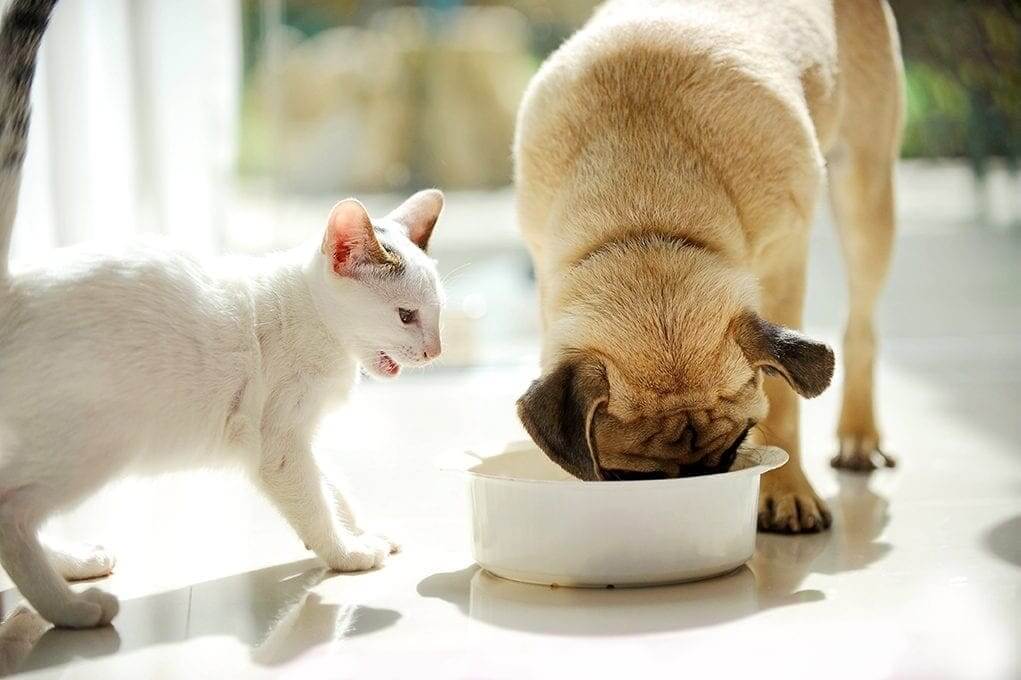
Dogs eat cat food for a simple reason: they like it. Cat food is generally higher in protein and fat than dog food, which makes it more appealing to dogs.
Dogs are omnivores, meaning they can eat animal and plant food sources, but they still have a strong preference for meat.
Cat food satisfies their carnivorous cravings, as it contains more meat-based ingredients than dog food.
Cat food also has a stronger smell and flavor than dog food, which attracts dogs’ sensitive noses and taste buds.
Can a Dog Die From Eating Cat Food?
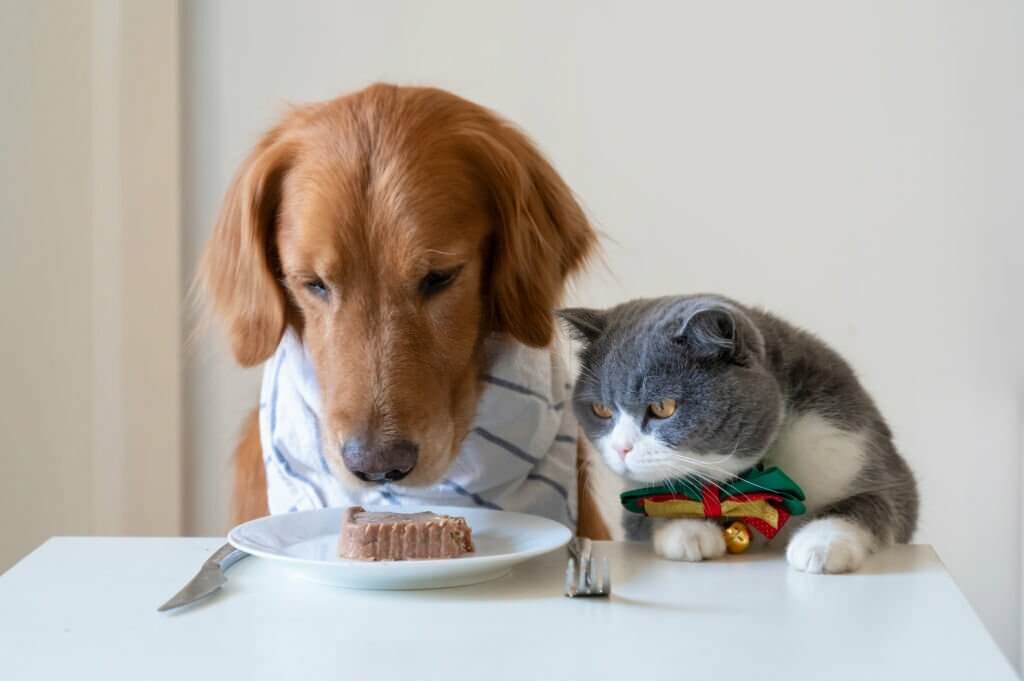
Cat food has more protein and fat than dog food. This is great for cats, but not for dogs. If a dog eats too much cat food, it might get an upset stomach. Sometimes, it can lead to pancreatitis, which is serious.
But, dogs eating cat food once in a while by accident usually isn’t a big deal. The main problem is if a dog eats cat food all the time instead of dog food. Then, they won’t get the right nutrients they need.
In short, a little cat food won’t kill a dog. But it’s important to feed them the right food for their health. I always make sure my dog eats dog food, not cat food.
The Differences Between Dog Food and Cat Food
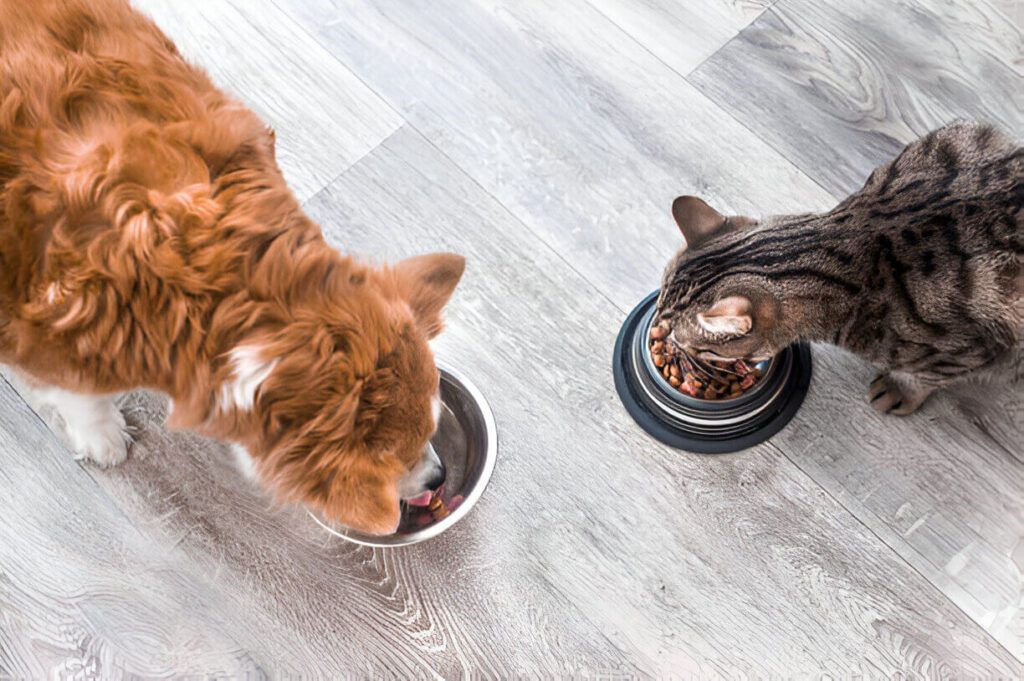
While dog food and cat food may look similar, they have different nutritional profiles tailored to each species’ specific needs. Cats are obligate carnivores, meaning they must eat meat to survive.
They have higher requirements for protein, taurine, vitamin A, and arachidonic acid, essential nutrients mainly found in animal sources.
Cats also have a lower carbohydrate tolerance, lacking the enzymes to digest them efficiently.
On the other hand, dogs are more adaptable to different types of food. They can produce some nutrients cats need, such as taurine and arachidonic acid, from plant sources.
They can also digest carbohydrates better than cats, as they have more amylase, an enzyme that breaks down starches.
Dogs need a balanced diet that includes animal and plant protein, fat, vitamins, minerals, and fiber sources.
The Risks of Feeding Cat Food to Dogs
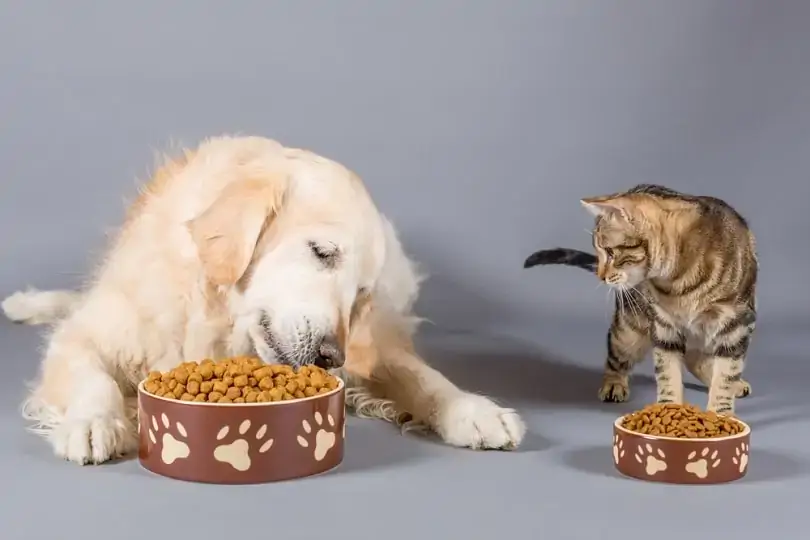
While a dog may enjoy eating cat food occasionally, it is not a good idea to feed it to them regularly.
Cat food is not designed for dogs and can cause several health problems if consumed excessively. Some of the risks of feeding cat food to dogs are:
Obesity
Cat food is more calorie-dense than dog food, as it has more protein and fat.
If a dog eats too much cat food, they may gain weight and become obese, which can lead to other issues such as diabetes, arthritis, and heart disease.
Pancreatitis
Cat food is also richer than dog food, which can put a strain on the dog’s pancreas. The pancreas is an organ that produces enzymes to digest food, especially fat.
If the pancreas is overloaded with fat, it can become inflamed and cause pancreatitis, a painful and potentially life-threatening condition.
Symptoms of pancreatitis include vomiting, diarrhea, abdominal pain, fever, and loss of appetite.
Digestive upset
Cat food can also upset the dog’s digestive system, as it differs from what they are used to.
Some dogs may experience vomiting, diarrhea, gas, or constipation after eating cat food, especially if they eat it too fast or too much.
These symptoms can lead to dehydration and electrolyte imbalance, which can be dangerous if not treated.
Nutritional imbalance
Cat food can also cause a nutritional imbalance in dogs, as it does not provide all the nutrients that dogs need.
Cat food may have too much or too little of certain vitamins, minerals, or amino acids that are essential for dogs.
For example, cat food may have too much vitamin A, which can cause toxicity in dogs, or too little vitamin E, which can cause deficiency in dogs.
A nutritional imbalance can affect the dog’s growth, development, immune system, and overall health.
How to Prevent Your Dog from Eating Cat Food
The best way to prevent your dog from eating cat food is to keep it out of their reach. Here are some tips to do that:
1. Separate their feeding areas:
Feed your cat and dog in different rooms, or use a pet gate or a door strap to block your dog’s access to the cat’s food.
You can also feed your cat on a high surface, such as a counter or a shelf, where your dog can’t reach.
2. Feed them at different times:
Feed your cat and dog at different times of the day so they don’t have the opportunity to steal each other’s food.
You can also use timed or automatic feeders to control when and how much your pets eat.
3. Use a creep feeder:
A creep feeder is a device that allows your cat to enter a small opening to access their food while keeping your dog out.
You can buy a ready-made creep feeder or make one using a cardboard box, a plastic container, or a wire crate.
4. Put uneaten cat food away:
Please don’t leave it out too long, as it can attract your dog’s attention.
Put away any uneaten cat food after your cat is done eating, or use a feeder that closes automatically when your cat walks away.
5. Teach your dog to “leave it”:
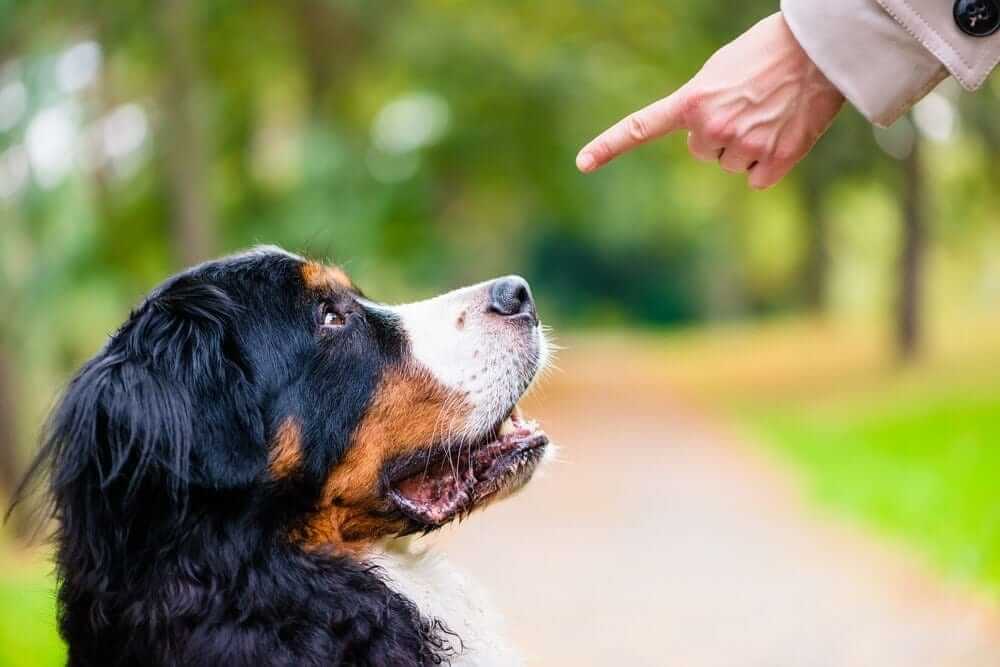
You can also train your dog to leave the cat’s food alone by teaching them the “leave it” command.
This command tells your dog to ignore something you don’t want them to touch, such as cat food, human food, or trash.
To teach your dog to “leave it,” you will need some treats and a clicker (optional). Here are the steps:
Hold a treat in your hand and show it to your dog. Then close your fist around the treat and say, “Leave it.”
Your dog will probably try to sniff, lick, or paw at your hand to get the treat. Ignore the attempts and wait until your dog stops trying to get at the treat.
When your dog stops, click (if using a clicker) and give him the treat from your other hand. Praise him and repeat the process several times.
Next, cover the treat on the floor with your hand. Say “Leave it,” and wait for your dog to stop trying to get the treat. Then click, praise, and reward him with your other hand.
You can increase the difficulty by gradually removing your hand from the treat, placing it on a table or chair, or using different objects like toys or cat food.
Once your dog learns to “leave it” on command, you can use it to stop him from eating cat food or anything else you don’t want him to.
Well, That’s a Wrap
In conclusion, while the occasional nibble on cat food may not immediately harm your dog, it’s crucial to recognize the potential risks associated with a consistent diet of feline fare.
The consequences can be more severe than meets the eye, from nutritional imbalances to digestive issues.
As responsible pet owners, we must be vigilant about what our dogs consume, ensuring they receive the right nutrients.
So, the next time your dog eyes that bowl of cat food with curiosity, consider the potential implications and opt for a diet tailored to their unique requirements.
After all, a little extra caution today can ensure a healthier, happier tomorrow for your beloved canine companion.
